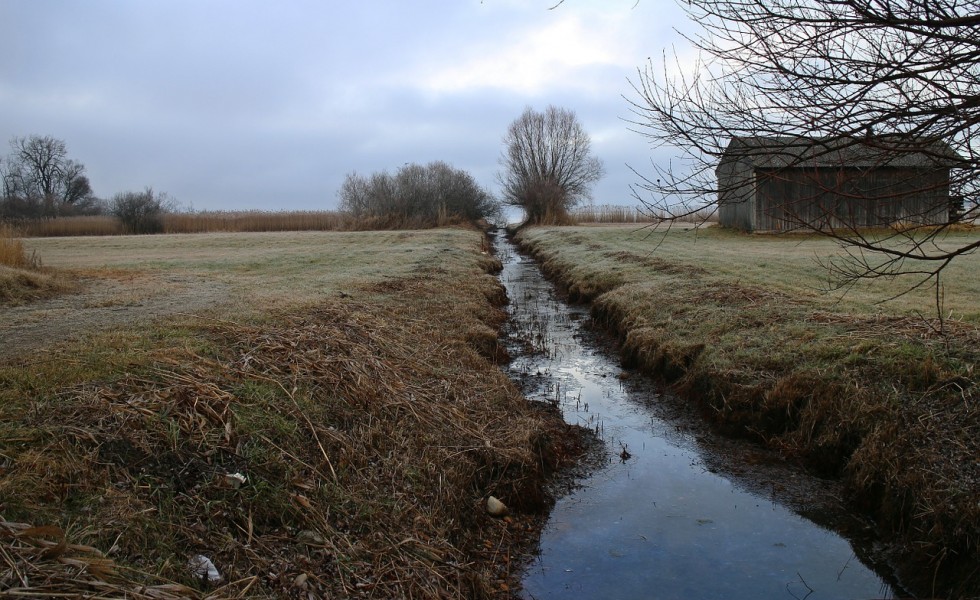Didn’t Everyone ‘Fall’ Plow in Mild, Warm February?
Posted on March 3, 2023

Winter’s icy winds, stinging snow, and below-zero temperatures finally found our slice of the upper Midwest late last month. Unlike northern winters of the past, however, this Arctic blast was a quick slap of shattering cold followed by a warm, 40-degree hug of sunshine to melt its accompanying snow and icy heart.
A fast, almost 50-degree-turnaround in temperature isn’t anything new to this aging southern Illinois farmboy. Mild winters–and, granted, sultry summers–defined the bottom third of the Prairie State during my youth. In fact, I never knew farmland froze solid during the Illinois winter until I migrated 200 miles north to the Big U.
It was a revelation: What, no one in central Illinois fall plowed in February? We did almost every old (or was it new?) crop year.
Indeed, my great Uncle Honey, an experienced mangler of semi-mounted plows no matter the season, never waited for any “spring thaw” to finish our fall plowing. If there was dirt to turn, Honey and his 1850 Oliver–one swaddled in layers of denim, the other in Heat-Houser canvas–throttled-up and hit the dead furrow.
My father was just the opposite. He loved spring, welcomed summer, relished fall but despised winter. “It’s easy to cool off,” he said by way of explanation, “but it’s hard to warm up.”
His strong opinion was shaped by decades–six-hours-a-day at a time–in an icy, concrete-block milking parlor. No matter the weather, from November through March, that parlor was, as Dad would say, “colder than a well digger’s foot.”
For a dozen or so of those winters, the only heat in the wet, cold parlor came from steaming cows and an open-flamed, propane-fueled stove the size of a small suitcase. It warmed the barn cats and an adult’s knees perfectly fine but offered little comfort to any other man or beast.
Finally, in a mid-1960s barn remodel, Dad splurged and had a gas furnace installed in the feed room above the parlor. Its blower pumped warm, dry air directly on Dad and into an adjoining milk room.
Howard, our long-time herdsman, loved the upgrade. After it was installed, forever glass-half-full Howard spent every spare winter moment–when he wasn’t milking, feeding, or cleaning up after Holsteins–looking out the south-facing windows of the now-toasty milk room puffing on his pipe in warm, happy silence.
Our home got a coal oil furnace a few years before the dairy barn. It was undersized and wheezed air that smelled like burned coal oil but it raised the overall temperature in our drafty farmhouse to, maybe, the high-50s on sunny winter afternoons.
Dad tried to improve its performance by placing a row of straw bales on the house’s perimeter. Since most of the house was built on piers (its only cellar was under the kitchen), every cold, uninsulated downstairs floor was made even colder by winter air and snow blowing under the house. Enter the straw-bale strategy.
And so too enter every mouse, opossum, raccoon, hibernating turtle, salamander, toad, and any other creature that knew how to build a dry, warm winter nest from fine wheat straw hand-delivered by some nice man blowing his nose in a red handkerchief.
Dad’s straw line of defense did, however, keep the water lines to our home’s only bathroom from freezing whenever the temperature dropped under 25 degrees. Of course, you had to keep the room’s propane stove lit and the water running–both hot and cold, please–to ensure the morning delivered you back into the same century you had left the night before.
Then, seemingly, as soon as everyone began to tire of cold cows, cold bedrooms, and cold feet, Mother Nature threw southern Illinois a sunny, warm February softball and temperatures would climb to 40, 50 and–more times than I can count–even 60 degrees.
My father would smile and cautiously expose a bare arm or two. My mother would smile and hang laundry–dozens of cotton gloves and heavy overalls–on her backyard clotheslines. Howard would smile, light his pipe, and haul manure.
And Uncle Honey would take his ear muffs off, fuel up, and plow and plow and plow.
© 2023 ag comm
Share This